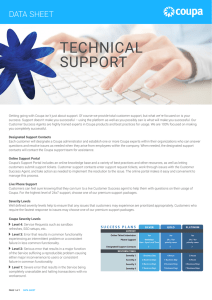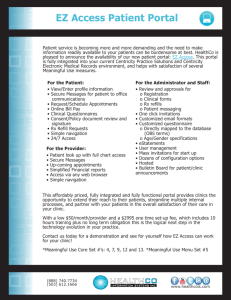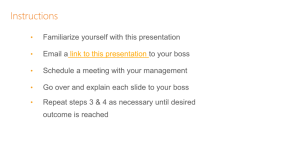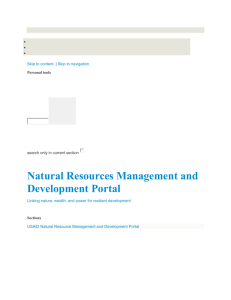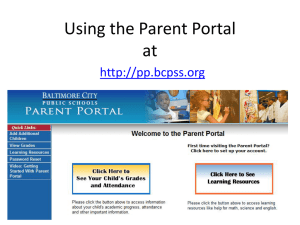A Clinical Portal Approach to EPR
advertisement
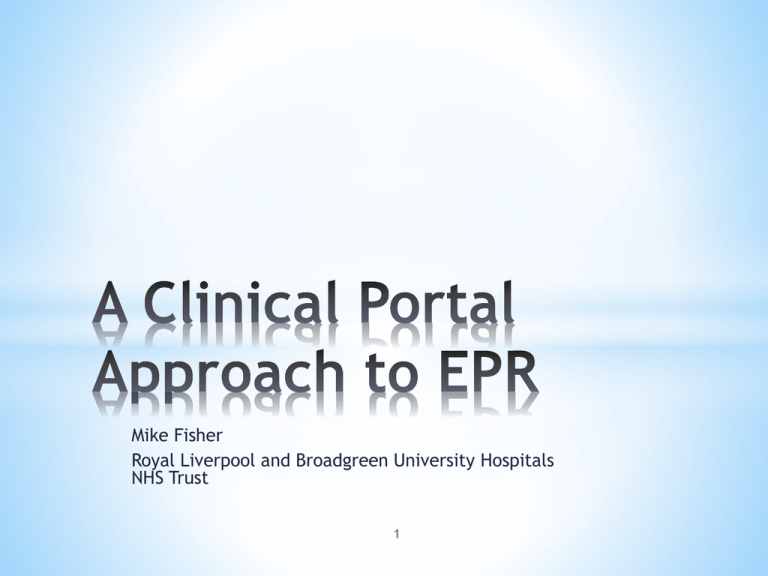
Mike Fisher Royal Liverpool and Broadgreen University Hospitals NHS Trust 1 * Critical factors for success * Why an EPR at all * The Portal approach to EPR * Strengths and Weaknesses 2 The primary driver for whatever approach is chosen to create the technology stack must be clinician ownership and buy-in. If the doctors and nurses won’t use it then it doesn’t matter what technical functionality and capability has been introduced.” SAFER HOSPITALS, SAFER WARDS: ACHIEVING AN INTEGRATED DIGITAL CARE RECORD, NHS England 2013 3 * 4 * 6 * 7 * 8 * 9 10 11 * 12 * 13 * “Best of Breed” approach using the investment and experience in existing systems * Launch of Underlying systems from a button bar when an action is needed * Held together by a clinical portal, to provide integration and patient context * 14 15 16 17 18 * 19 Portal Approach Deployment Business change Integrated Approach Readily supports incremental addition of functions. More suited to “big-bang” deployment Takes much longer to implement and results in a mixed system of electronic and paper for longer Produces a completely or largely electronic system quite rapidly Cost savings take longer to be realised. But upfront costs tend to be lower. High upfront costs. More rapid cost benefit realisation. Incremental approach leads to more gradual impact on business as usual and lower risk of complete failure. Pain is over more quickly and the rapid pace of change may focus the organisation more on getting the project done Ability to leverage existing trusted Necessity for “rip and replace” of all and accepted systems by integrating known and existing systems these into the portal. * (Perceived advantages are show in black, disadvantages in red) 20 Clinician Acceptance Flexibility Ability to integrate familiar systems that clinicians are happy using. Entirely new system to be learned. Major training issues. Inconsistent design and slower performance in moving from one system to another Consistent look and better performance, at least potentially Potentially easier to introduce and new function into the system by adding an outside module Addition of new functionality requires new development by the company with all the associated time and cost Adding new module requires ongoing integration work to ensure that data silos are not created within the new module An integrated system will have a single underlying database, usually removing issues of compatibility, sharing of data between different modules and consistency of database structures 21 Managability Additional Functions Interoperability Requires on-going management of all the Much more straightforward to manage. components, particularly upgrades to ensure no loss of compatibility with the portal Upgrades may be more cost effective, as only the individual components need to be upgraded, BUT overall costs could be higher due to having to maintain individual contracts and licenses for all of the component applications as well as the portal itself. Not currently supported by the portal, but could in principal be added on, however this would require substantial development to the data warehouse before this would be possible. Very dependent on the system selected. None (to my knowledge) support the required UK audit data sets. Functionality to support research tends to be very limited. Decision support tends to limited to prescribing on most systems. If data warehouse issues could be solved, would allow extensive in-house queries and business intelligence tools without the necessity to involve outside companies. Some systems do offer decision support and clinical pathways – usually the very expensive ones. Interoperability is an intrinsic part of a portal system and thus is built into the architecture from the outset. Varies substantially from system to system, but in most cases is limited and making the system interoperable with third party applications is expensive and in many cases may be actively obstructed by the vendor who has an interest in tying customers into their products. 22 * Clinical Engagement First * Clinicians means more than consultants * Consider what you have already * Does it work and is it liked * Have you got the board behind you * 24 Questions? 25



